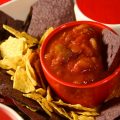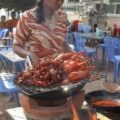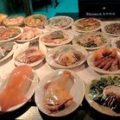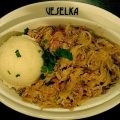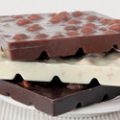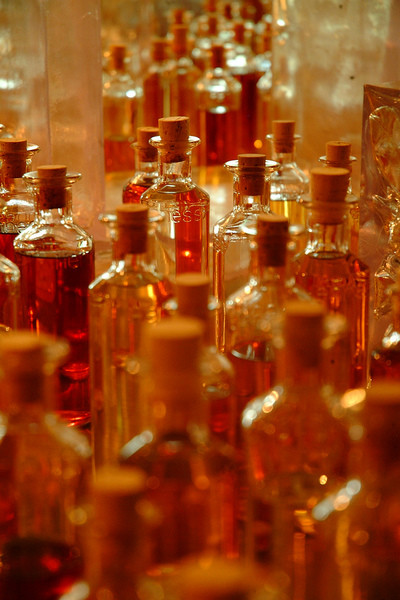 Recipes for alcoholic drinksEau-de-vie –the term is primarily cognac: this is what the drink's producers call grape spirit obtained as a result of double distillation and which is destined to become cognac. Fruit eau-de-vie, like cognac, due to the production features (double distillation), belongs to the brandy family, although they are often called liqueurs. But unlike liqueurs, eau-de-vie are quite strong and dry-tasting colorless drinks. "Water of life" is made from whole fruits and berries; from 10 to 30 kg of "source material" are used per liter of drink. Fermented fruit and berry juice is subjected to double distillation in Charentais copper stills. The first stage is very easy: as much alcohol as possible is extracted from the must. At the second stage, the product of primary distillation is deprived of its "head" and "tail". (initial and final distillate yield). The "wet" residue is what is called the "heart", or eau-de-vie itself, with a strength of 50-70%. After distillation, fruit eau-de-vie, unlike grape brandies, which are sent to mature in oak barrels, matures for another six years in steel tanks and only then is bottled. The main varieties of eau-de-vie include Williams Pear (made from the pear variety of the same name), Prisoner Pear (a "sharpened pear" - a bottle of brandy holds the whole fruit), Framboise sauvage (made from wild raspberries picked early in the morning), Kirsch (made from small black southern German cherries), Mirabel (made from small sweet yellow plums with red speckles), Old Plum (the only plum eau-de-vie that ripens in oak barrels). In addition, the cunning French make eau-de-vie from almost any berries - elderberry, blueberry, rowan, strawberry, quince, hawthorn, black currant, rose hip. By a strange injustice, these drinks are little known in Russia and therefore not very popular. However, experts predict that Moscow's fashion for "the water of life" is just around the corner.
Recipes for alcoholic drinksEau-de-vie –the term is primarily cognac: this is what the drink's producers call grape spirit obtained as a result of double distillation and which is destined to become cognac. Fruit eau-de-vie, like cognac, due to the production features (double distillation), belongs to the brandy family, although they are often called liqueurs. But unlike liqueurs, eau-de-vie are quite strong and dry-tasting colorless drinks. "Water of life" is made from whole fruits and berries; from 10 to 30 kg of "source material" are used per liter of drink. Fermented fruit and berry juice is subjected to double distillation in Charentais copper stills. The first stage is very easy: as much alcohol as possible is extracted from the must. At the second stage, the product of primary distillation is deprived of its "head" and "tail". (initial and final distillate yield). The "wet" residue is what is called the "heart", or eau-de-vie itself, with a strength of 50-70%. After distillation, fruit eau-de-vie, unlike grape brandies, which are sent to mature in oak barrels, matures for another six years in steel tanks and only then is bottled. The main varieties of eau-de-vie include Williams Pear (made from the pear variety of the same name), Prisoner Pear (a "sharpened pear" - a bottle of brandy holds the whole fruit), Framboise sauvage (made from wild raspberries picked early in the morning), Kirsch (made from small black southern German cherries), Mirabel (made from small sweet yellow plums with red speckles), Old Plum (the only plum eau-de-vie that ripens in oak barrels). In addition, the cunning French make eau-de-vie from almost any berries - elderberry, blueberry, rowan, strawberry, quince, hawthorn, black currant, rose hip. By a strange injustice, these drinks are little known in Russia and therefore not very popular. However, experts predict that Moscow's fashion for "the water of life" is just around the corner.

Making Money with Desserts: Success Stories
Evgeniya Polischuk (Fedutinova) instagram:@evgeniyafedutinovavk.com/janeshomebaking– It all started with baking for family and friends. Gradually, I started posting photos of my baked goods on Instagram – and orders started coming in. I made my first custom-made cake on October 13, 2014, and a little earlier I started making macaroons and cupcakes. You could say that the business “found me”, I am very […]

Soups are cold recipes with photos
Cold cucumber soup with yogurt and lemonsorbet from the chef of the restaurant La Taverna Alexander Zhurkin Photo: Getty Images Ingredients: Plain yoghurt – 125 g Cucumber – 150 g Lemon/lime sorbet – 50 g Cocktail shrimp – 24 g Fresh ginger juice – 1 g Lime juice – 5 g Fresh orange juice – 5 g Parsley – 1 g Pink pepper – 1 g Watercress – […]

barbeque kebab
Pork tenderloin in glaze Photo:Dmitry Bayrak/dbstudioPreparation time: 20 minutes + marinating time.Calories: 454 kcal per serving.For 4 servings: 4 pork tenderloins (approximately 300 g each), 1 onion, 2 cloves of garlic, 1 tsp. lemon zest, 1 tsp. lemon juice, a pinch of ground cumin, coriander and turmeric, 1 tbsp. vegetable […]

Pierre Duacan: dietary recipes: Ducane diet
Beetroot soup Photo:Season’S, Luxury Hotels RepresentationYou will need:· Boiled beetroot – 60 g· Fresh cucumbers – 20 g· Red radish – 20 g· Green onions – 10 g· Egg – 1 pc.· Drinking mineral water – 200 g· Salt – 1 gPreparation:· Boil the egg and beetroot.· Grate the cucumbers, radish and part of the beetroot. Put everything […]
